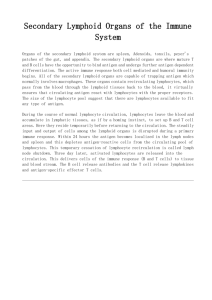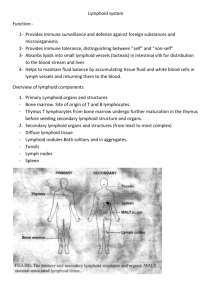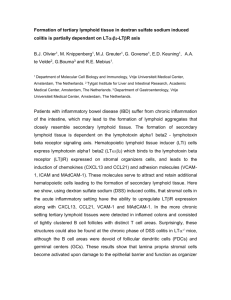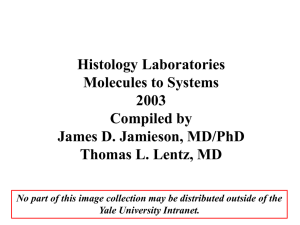2nd year medical technology
advertisement
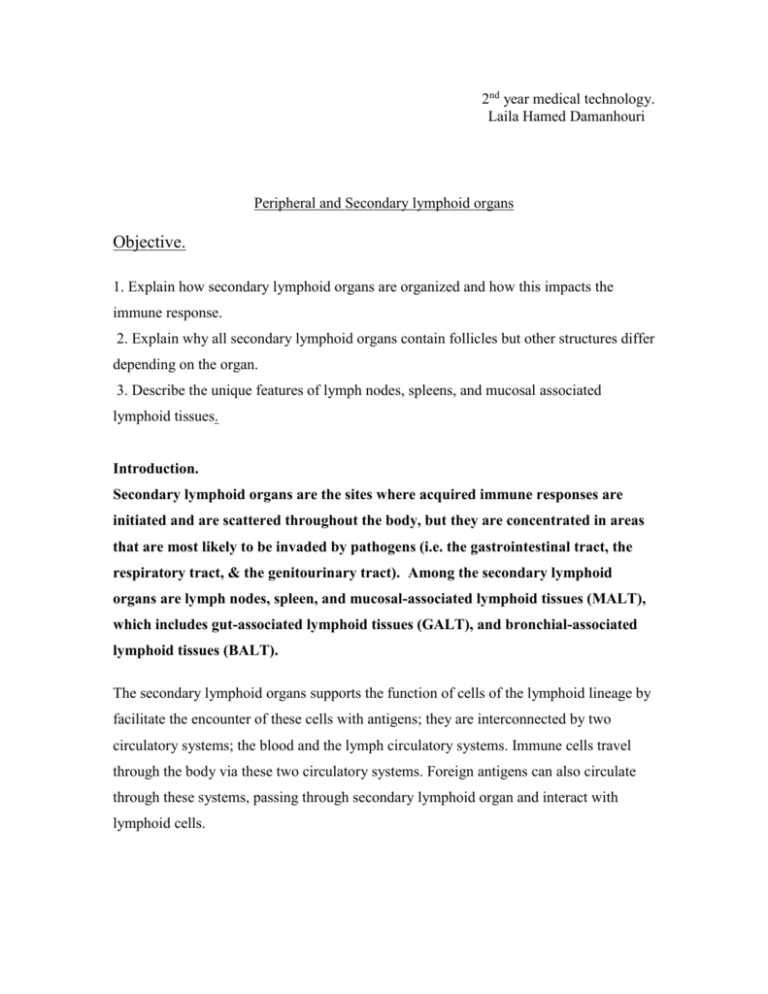
2nd year medical technology. Laila Hamed Damanhouri Peripheral and Secondary lymphoid organs Objective. 1. Explain how secondary lymphoid organs are organized and how this impacts the immune response. 2. Explain why all secondary lymphoid organs contain follicles but other structures differ depending on the organ. 3. Describe the unique features of lymph nodes, spleens, and mucosal associated lymphoid tissues. Introduction. Secondary lymphoid organs are the sites where acquired immune responses are initiated and are scattered throughout the body, but they are concentrated in areas that are most likely to be invaded by pathogens (i.e. the gastrointestinal tract, the respiratory tract, & the genitourinary tract). Among the secondary lymphoid organs are lymph nodes, spleen, and mucosal-associated lymphoid tissues (MALT), which includes gut-associated lymphoid tissues (GALT), and bronchial-associated lymphoid tissues (BALT). The secondary lymphoid organs supports the function of cells of the lymphoid lineage by facilitate the encounter of these cells with antigens; they are interconnected by two circulatory systems; the blood and the lymph circulatory systems. Immune cells travel through the body via these two circulatory systems. Foreign antigens can also circulate through these systems, passing through secondary lymphoid organ and interact with lymphoid cells. Spleen. Location. The spleen lies at the upper left quadrant of the abdomen, behind the stomach. Structure. It is formed from outer layer consists of capsule of collagen fibers, and two types tissues the white pulp and red pulp. The red pulp primarily contains erythrocytes, including numerous dying red blood cells as well as macrophages that contain engulfed red blood cells. The white pulp can be divided into:Central artery that surrounded by lymphoid tissues and forming periarterial lymphatic sheath (PALS). A. PALS are T- lymphocytes rich area and also contain dendritic cells that act as antigen presenting cells. B. The marginal zone, located peripherally to PALS, is rich in B cells which organized into; 1) Primary (unstimulated follicle) which formed mainly from virgin B cells, 2) secondary (stimulated follicles) forming a germinal center. The germinal center contain follicular dendritic cells and macrophages, Blood entering through splenich artery to enter marginal zone. B cells stimulated by antigens migrate to PALS to collaboration with T cells that reside in PALS. If B-cell-T cell collaboration is successful, activated B and T cells migrate into primary follicle, which become a secondary follicle. Function of spleen. 1. It is the site of filtration of blood for pathogens and old or damaged blood cells. This filtration function occurs in the red pulp of spleen. 2. The white pulp of the spleen; comprise an important immunologic organ. Lymph nodes. Lymph nodes are small bean shaped structures lying along the course of lymphatics. They are aggregated in particular sites such as the neck, axillae, groins and paraaortic region. Lymph nodes are scattered throughout the body and filter out microbes or damaged tissue. Lymph nodes are responsible for the acquired immune response against antigens encountered in the skin or connective tissues. Function of Lymph nodes. LN has two main functions: 1. phagocytic cells act as filters for particulate matter and micro-organisms 2. Antigen is presented to the immune system. Structure of lymph nodes. Lymph node is primarily consists of three components. 1. lymphatic sinuses. Afferent lymphatics deliver fluid from the tissues to the subcapsular sinus of the lymph node. This fluid contains cells and antigens that stimulate the acquired immune system. 2. Parenchyma. Parenchyma is divided into three important areas (cortex, paracortex, medulla.). B cells are found predominantly in the outer cortex pf lymph nodes which contain a number of dense aggregations of lymphocytes termed follicles. These enlarge during an active immune response to form germinal centers which contain large number of proliferating B lymphocytes surrounded by a mantle zone consisting of small, naive B cells and a few T cells. Paracortex. The paracortex contains lymphocytes and accessory cells along with supporting cells and it is the predominant site for T lymphocytes within the lymph node. In addition there are numerous Interdigitating cells in the paracortex and they act as antigen presenting cells. Medulla:- The medulla comprises of large blood vessels, medullary sinuses and The medullary cords which are rich in plasma cells which produce antibodies that pass out of the node via the efferent lymphatic. Macrophages are also numerous within the medulla. Mucosa-associated lymphoid tissue (MALT) In addition to the lymphoid tissue concentrated within the lymph nodes and spleen, lymphoid tissue is also found at other sites, most notably the gastrointestinal tract, respiratory tract and urogenital tract. Gut associated lymphoid tissue (GALT) This comprises: tonsils, Peyer's patches in intestine, lymphoid aggregates in the appendix and large intestine Peyer's Patches These are quite large aggregates of lymphoid tissue found in the small intestine. These lymphoid tissues are covered with specialized epithelium contain specialized cells and known as M cells. They and are believed that these cells an important in the transfer of antigen from the gut lumen to Peyer's Patches. Peyer's Patches facilitate the generation of an immune response within the mucosa. B cell precursors and memory cells are stimulated by antigen in Peyer's Patches. 6) Lymphocyte recirculation Lymphocytes and some mononuclear phagocytes can recirculate between lymphoid and non-lymphoid tissues. This helps in allowing lymphocytes to be exposed to the antigens which they recognize 1. virgin lymphocytes move from the primary to secondary lymphoid tissue via the blood . 2. activated lymphocytes move from the spleen, lymph nodes and MALT into the blood and thene to other lymphoid and non-lymphoid tissues. 3. antigen presenting cells such as macrophages and dendritic cells may carry antigen back to lymphoid tissues from the periphery.
